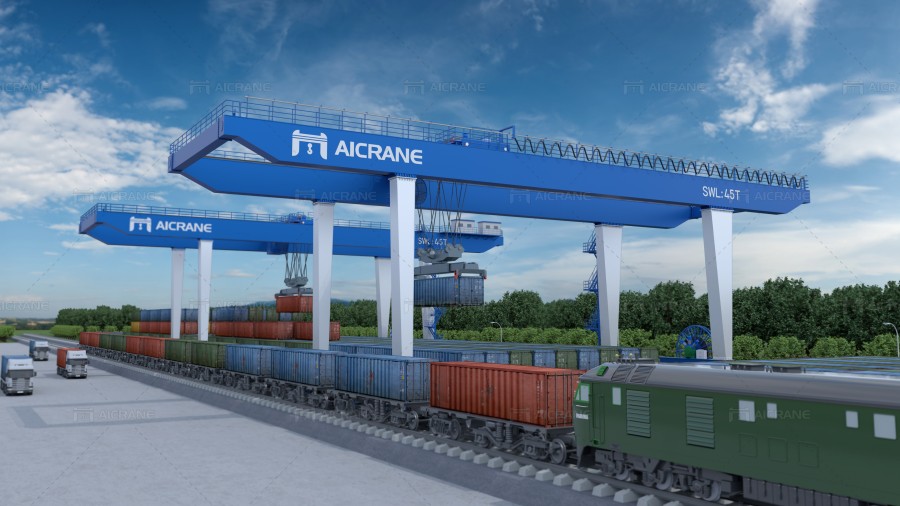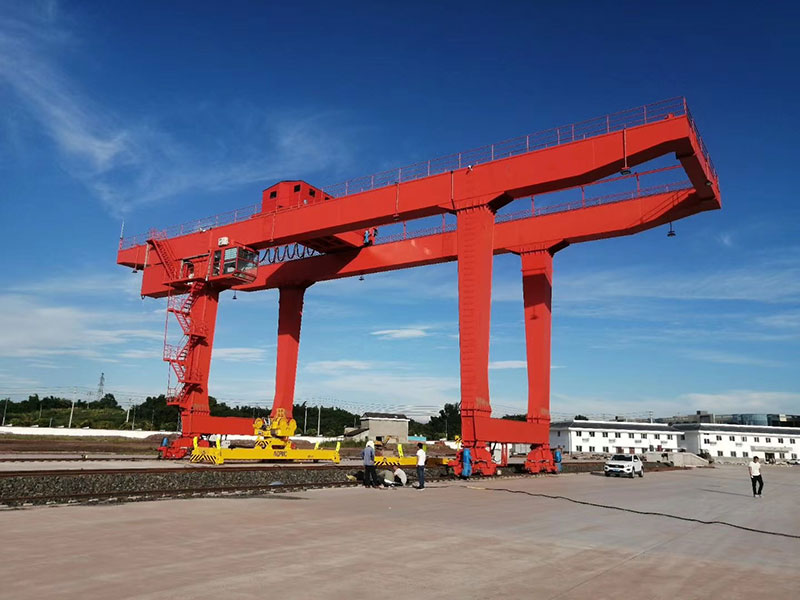In the dynamic landscape of intermodal transportation, where goods seamlessly transition between various modes of transport, efficiency and precision are paramount. Rail Mounted Gantry (RMG) cranes have emerged as pioneering assets, revolutionizing the movement of cargo containers within intermodal terminals and facilitating the seamless integration of rail, road, and maritime transportation networks. As key components of modern logistics infrastructure, RMG cranes play a pivotal role in enhancing operational efficiency, optimizing space utilization, and reducing handling times, thereby driving innovation and progress in intermodal transportation systems.
Evolution of Rail Mounted Gantry Cranes
Rail Mounted Gantry (RMG) cranes have undergone significant evolution to meet the growing demands of intermodal transportation. Originally designed as static container handling systems, modern rail mounted gantry cranes feature advanced technologies, including automated control systems, laser-guided positioning, and remote monitoring capabilities. These innovations enable precise and efficient container handling operations while optimizing resource utilization and minimizing environmental impact.

Precision and Efficiency in Container Handling
At the heart of intermodal transportation lies the efficient handling of shipping containers as they transition between different modes of transport. RMG cranes excel in this regard, offering unparalleled precision and efficiency in container handling operations within rail yards and container terminals. Equipped with telescopic spreaders and sophisticated lifting mechanisms, RMG container gantry cranes can swiftly and safely lift, move, and stack containers with precision, minimizing dwell times and maximizing throughput.
Optimizing Space Utilization
Intermodal terminals and rail yards often operate within limited space constraints, requiring innovative solutions to optimize space utilization and maximize operational efficiency. RMG cranes are ideally suited for this purpose, as they can straddle multiple rail tracks and handle containers stacked several units high. By utilizing vertical space effectively, RMG cranes enable terminals to accommodate larger volumes of cargo within existing footprints, thereby enhancing throughput and minimizing congestion.
Seamless Integration of Transportation Networks
In the interconnected world of intermodal transportation, RMG cranes serve as vital links that facilitate the seamless integration of rail, road, and maritime transportation networks. By efficiently transferring containers between railcars, trucks, and ships, RMG cranes enable cargo to traverse vast distances quickly and cost-effectively. This seamless integration enhances supply chain resilience, reduces transit times, and improves the overall reliability of freight transportation services.

Environmental Sustainability
As sustainability becomes increasingly important in transportation and logistics, RMG cranes offer environmental benefits by reducing energy consumption and emissions associated with container handling operations. Through the use of advanced technologies such as regenerative braking and energy-efficient motors, RMG cranes minimize their carbon footprint while maintaining high levels of operational performance. Additionally, the optimized space utilization enabled by RMG cranes helps reduce the need for additional infrastructure expansion, further mitigating environmental impact.
Advancements in Automation and Digitalization
The advent of automation and digitalization has further enhanced the capabilities of RMG cranes, enabling terminals to achieve new levels of efficiency and productivity. Automated RMG (ARMG) systems, equipped with intelligent control algorithms and real-time monitoring capabilities, optimize container handling processes, reduce human error, and enhance safety. Additionally, integration with advanced terminal operating systems (TOS) and data analytics platforms enables terminals to gather insights, optimize resource allocation, and predict maintenance requirements, thereby improving overall operational efficiency and reliability.
Rail Mounted Gantry (RMG) cranes stand at the forefront of innovation in intermodal transportation, pioneering efficiency, and reliability in container handling operations. With their precision, versatility, and environmental sustainability, RMG gantry lifting cranes play a vital role in shaping the future of global logistics infrastructure. As the demand for efficient and sustainable transportation solutions continues to grow, RMG cranes will remain indispensable assets, driving progress and facilitating the seamless movement of goods across interconnected transportation networks.
